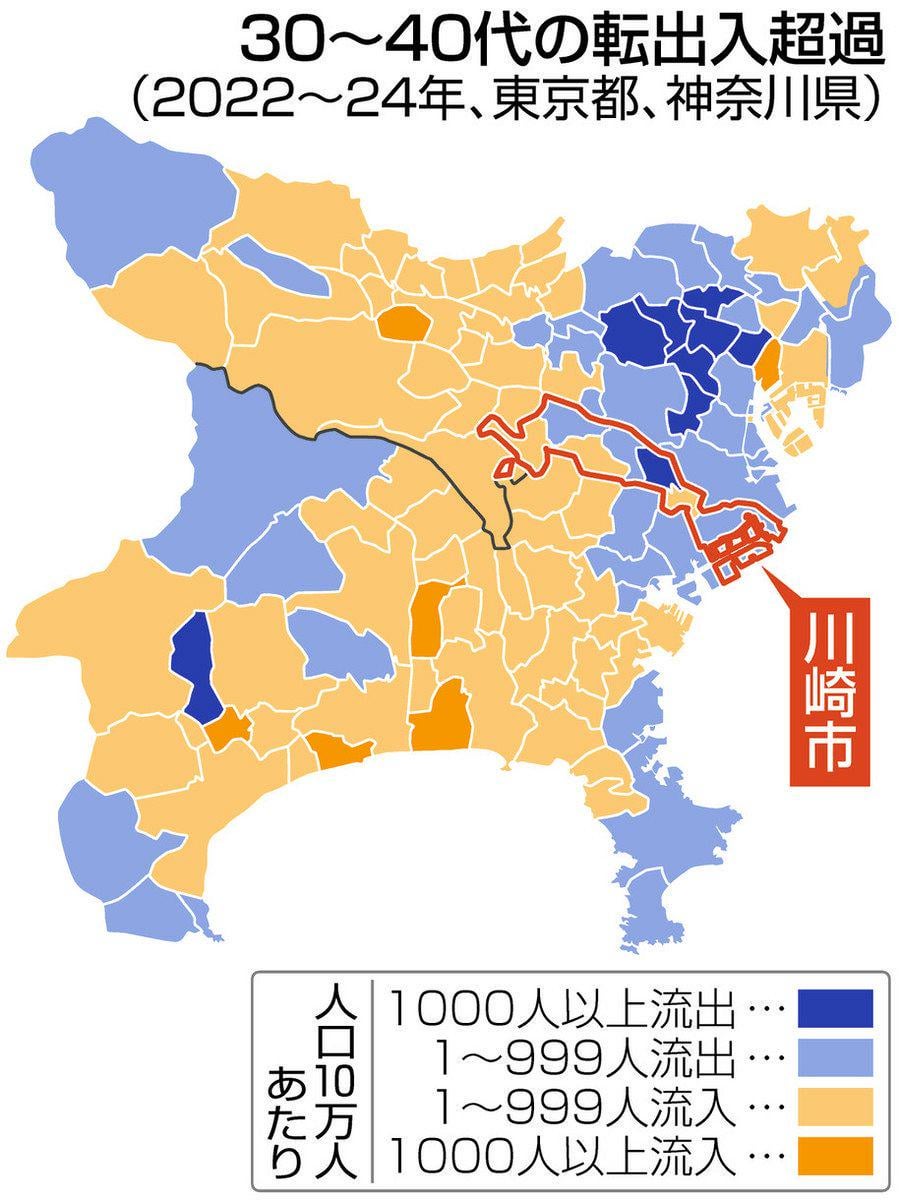
Despite Japan’s population decline, Kawasaki City continues to grow, largely due to more people moving in than leaving, even as deaths rise due to an aging population. However, when examining the key demographic of 30-40 year-olds, who are central to child-rearing, the city experiences a net population loss. One potential factor, known as the “Tamagawa Gap,” refers to differences in child-rearing support budgets compared to Tokyo. Analyzing public statistics reveals that this gap is not the main reason for the exodus.
According to the Ministry of Internal Affairs, from 2022-2024, Kawasaki saw 9,465 people aged 30-40 moving out, while people in their late teens and 20s had a net increase of 37,378. Many leave for Yokohama or the Tama area outside Tokyo’s 23 wards. Within Kawasaki, areas like Nakahara experience significant outflows, while districts such as Saiwai and Miyamae have slight inflows. Similar patterns are observed in some Tokyo wards, as young families generally seek affordable living spaces outside central metropolitan areas.
Further analysis highlights three factors influencing the trend: high rent, income disparities, and limited park space. These issues are especially evident in neighborhoods like Nakahara, prompting child-rearing families to move to areas with better living conditions.
by MagazineKey4532
